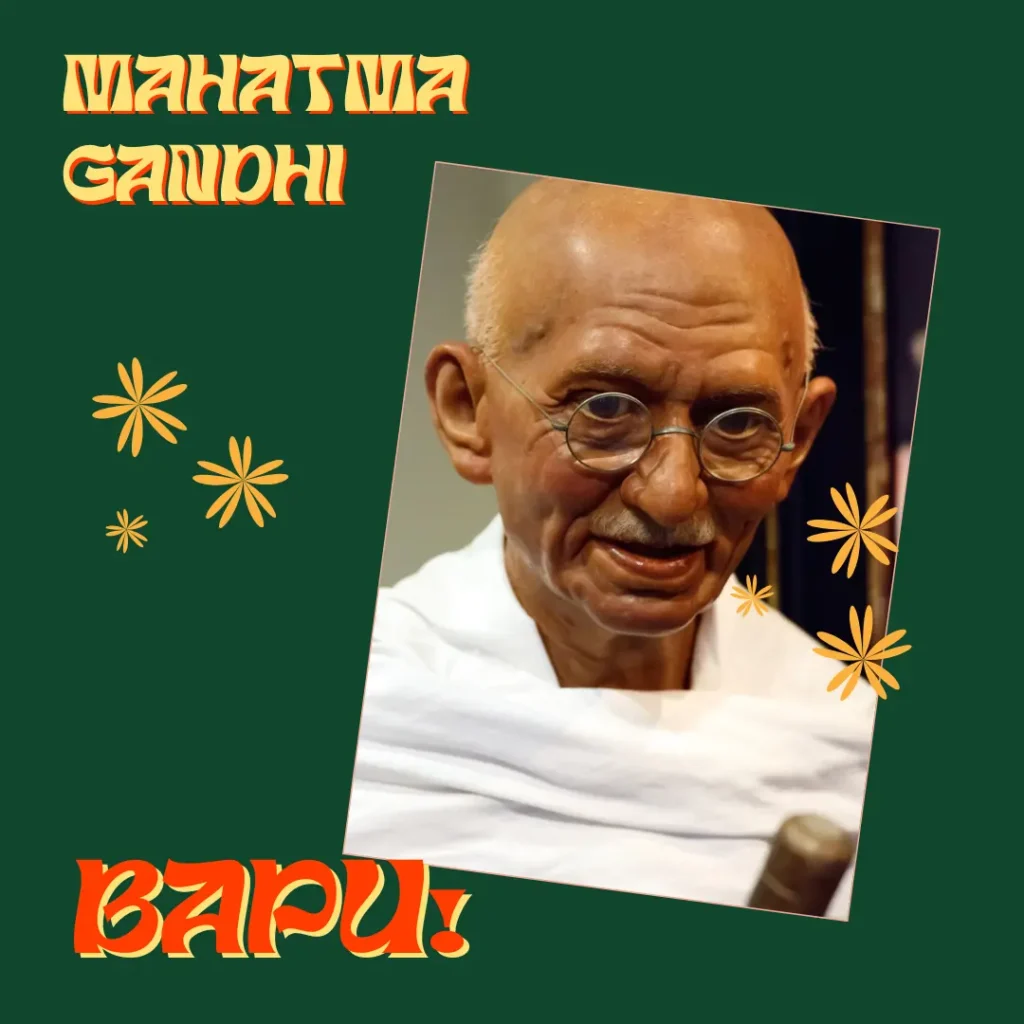When we hear the name Mahatma Gandhi, it instantly brings to mind the image of a man draped in simple white cloth, holding a walking stick, and radiating peace and wisdom. Known as the Father of the Nation in India, Mahatma Gandhi was not just a political leader—he was a visionary who led millions through the power of truth and non-violence. In this article, we’ll take a deep dive into the life, struggles, philosophy, and lasting impact of Mahatma Gandhi, using this powerful focus keyword to ensure a rich SEO-optimized read.
Who Was Mahatma Gandhi?
Mahatma Gandhi, whose full call turned into Mohandas Karamchand Gandhi, became born on October 2, 1869, in Porbandar, Gujarat, India. From a young age, Mahatma Gandhi showed signs of curiosity and moral thinking.His adventure from a shy child to a worldwide icon of peace is nothing brief of inspiring.
Early Life and Education of Mahatma Gandhi
Mahatma Gandhi came from a modest background. He was married on the age of thirteen to Kasturba Gandhi in a conventional Indian ceremony. After completing his early education in India, Mahatma Gandhi traveled to London in 1888 to study law. It was during this time that his ideas began to evolve, influenced by Western culture and philosophies.
Mahatma Gandhi’s Time in South Africa
Before he became a central figure in India’s independence movement, Mahatma Gandhi spent 21 years in South Africa. It turned into here that he experienced racial discrimination firsthand. One notable incident was when Mahatma Gandhi was thrown off a train despite holding a valid ticket—just because of the color of his skin. This sparked a fire within him to fight injustice.
He developed his philosophy of Satyagraha, or truth-force, during this period. Mahatma Gandhi led peaceful protests and legal challenges against discriminatory laws, gaining both experience and confidence.
Return to India and Rise in Freedom Struggle
In 1915, **Mahatma Gandhi** returned to India and joined the Indian national Congress. Unlike other leaders of the time, Mahatma Gandhi chose non-violence and truth as his weapons. His method of protest was not through aggression but through mass civil disobedience.
From the Non-Cooperation Movement to the Salt March, Mahatma Gandhi inspired millions to join the struggle against British rule. His simplicity, humility, and commitment to truth won hearts across the nation.
Mahatma Gandhi and the Salt March
One of the most iconic movements led by Mahatma Gandhi was the Dandi Salt March in 1930. British laws had imposed a tax on salt, a basic necessity. In protest, Mahatma Gandhi walked 240 miles from Sabarmati to Dandi and made salt from seawater.
This peaceful yet powerful act became a global symbol of resistance. It showed how Mahatma Gandhi used non-violence not just as a principle but as a practical strategy for social change.
Philosophy of Mahatma Gandhi
At the heart of Mahatma Gandhi’s life was his philosophy of Ahimsa (non-violence) and Satya (truth). He believed that one should fight evil, but not the evil-doer. According to Mahatma Gandhi, violence only leads to more violence, while truth and love can change hearts.
His approach influenced not just India but global leaders like Martin Luther King Jr., Nelson Mandela, and even the Dalai Lama. The teachings of Mahatma Gandhi continue to inspire civil rights movements worldwide.
Role of Mahatma Gandhi in India’s Independence
India’s path to freedom was long and painful, but Mahatma Gandhi made it morally dignified. He led several nationwide campaigns such as the Quit India Movement in 1942, where he urged the British to leave India immediately.
despite being jailed a couple of instances, Mahatma Gandhi never deserted his ideas. He unified people across religions, castes, and regions, proving that one man’s vision can rally an entire nation.
Mahatma Gandhi’s Assassination and Legacy
Tragically, Mahatma Gandhi become assassinated on January 30, 1948, via Nathuram Godse. His death shocked the entire world. However, even in his death, Mahatma Gandhi left behind a legacy that would never fade.
Today, his birthday is celebrated as Gandhi Jayanti in India and also as the International Day of Non-Violence across the world.
Global Influence of Mahatma Gandhi
The legacy of Mahatma Gandhi goes a long way past India. His methods influenced peaceful protest movements in the U.S., South Africa, and many other countries.In reality, Albert Einstein once stated, “Generations to come back will scarce agree with that this sort of one as this ever in flesh and blood walked upon this earth.”
Such was the aura of Mahatma Gandhi—a man who conquered empires without lifting a sword.
Why Mahatma Gandhi Still Matters Today
In today’s world, filled with conflict, hatred, and division, the teachings of Mahatma Gandhi are more relevant than ever. His life reminds us that:
- Change starts with oneself.
- Truth and non-violence are powerful tools.
- Leadership means serving others.
Whether you’re a student, leader, activist, or just a curious soul, studying the life of Mahatma Gandhi offers valuable lessons for personal and societal transformation.
Conclusion
To sum it all up, Mahatma Gandhi was much more than a historical figure—he was a force of nature. His unwavering commitment to non-violence, truth, and justice earned him not just political victories, but the respect and admiration of the entire world. Even decades after his death, the teachings of Mahatma Gandhi continue to shine a light in dark times.
Whether it’s about achieving social justice, promoting peace, or leading with humility, the path shown by Mahatma Gandhi remains a timeless guide. If there is one name that defines peaceful resistance and moral leadership, it is undoubtedly Mahatma Gandhi.


